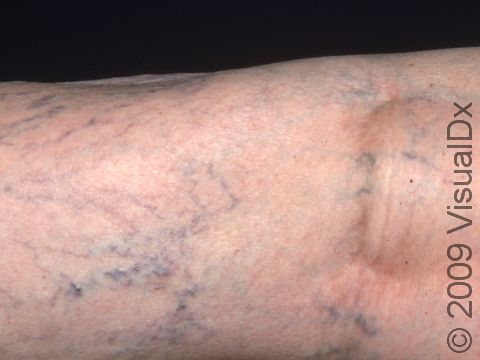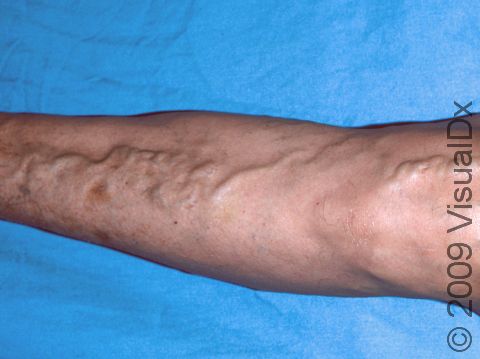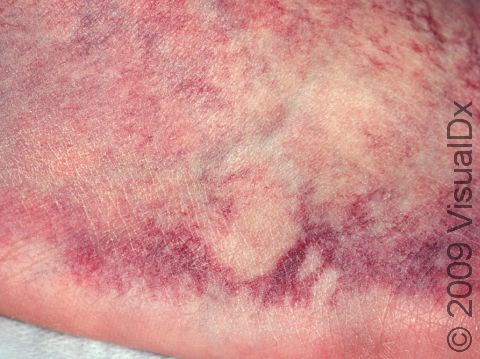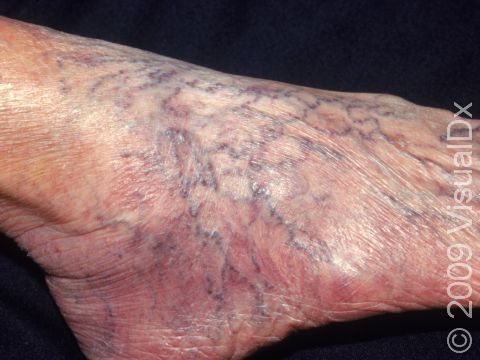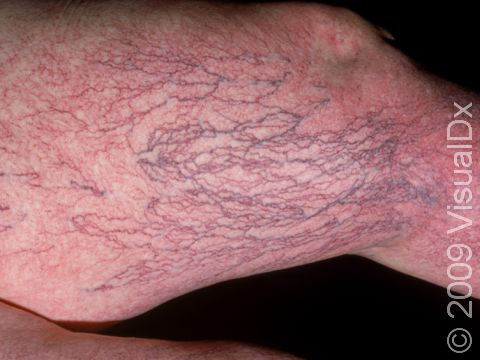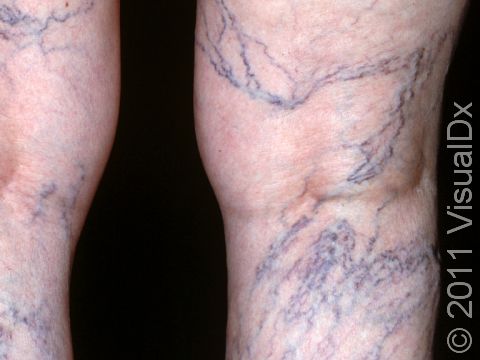Varicose Veins (Varicosities)
Varicose veins (varicosities) are twisted, enlarged veins at the skin surface. The word comes from the Latin word varix, which means “twisted.”
Varicose veins occur due to poor functioning (malfunction) of valves in the deeper leg veins (venous insufficiency), making blood back up (pool) in the legs, with the resulting pressure causing surface veins to enlarge.
Who's At Risk?
Varicose veins affect up to 60% of American adults. Women are more often affected than men.
You are at greater risk if you:
- Are older
- Have other family members with varicose veins
- Are overweight
- Stand for long periods of time
Varicose veins often first occur during pregnancy, when the growing baby exerts pressure on the mother’s leg veins.
Signs & Symptoms
Bulging, cord-like, twisted, soft, blue-to-purple swellings are seen on the legs, anywhere from the groin to the ankle. Many times there are no symptoms, but some people complain of burning, throbbing, muscle cramping, swelling, or an achy or heavy feeling in the legs.
Self-Care Guidelines
Compression stockings (to help blood return to the heart and give extra support to the damaged veins) are the first thing to try. This may be difficult, as you must search for the proper kind, and they are tighter and require more effort to put on than regular hose and socks. However, wearing compression stockings is the most important thing you can do and will be required by any doctor you see.
For the maximum benefit, compression stockings must be worn every day and put on when first getting out of bed, before gravity has a chance to cause the legs to swell. Non-prescription compression (or pressure) stockings are sold in many pharmacies and medical supply stores. They are also available on the Internet. Many styles, colors, and strengths are available. Make sure they fit properly. You may need to measure your leg to assure proper fit. For people with arthritis, there are devices to help you put on compression stockings.
To prevent varicose veins from getting worse:
- Exercise
- Lose weight
- Avoid tight clothing, which holds back blood from returning to the heart
- Elevate your legs
- Avoid long periods of standing
Treatments
If you have any signs of infection or skin breakdown, antibiotics or special dressings may be recommended.
An exam will be done to evaluate blood flow (circulation) in your leg. An ultrasound test may be done to check for a blood clot.
You may be referred to a vein specialist (phlebologist) to discuss treatment options, which include:
- Sclerotherapy
- Endovenous (inside the vein) laser
- Radiofrequency treatment
- Surgery
Visit Urgency
See your doctor if compression stockings do not improve your symptoms, if you have a breakdown in the skin (ulcer), or if you have severe swelling or pain in your leg.
You might also see a doctor if you are concerned with how the veins appear and are considering having them removed. Insurance will usually not cover treatment of varicose veins for cosmetic reasons.
Trusted Links
References
Bolognia, Jean L., ed. Dermatology, pp.1635. New York: Mosby, 2003.
Freedberg, Irwin M., ed. Fitzpatrick’s Dermatology in General Medicine. 6th ed. pp.21. New York: McGraw-Hill, 2003.
Last modified on October 10th, 2022 at 7:35 pm

Not sure what to look for?
Try our new Rash and Skin Condition Finder
